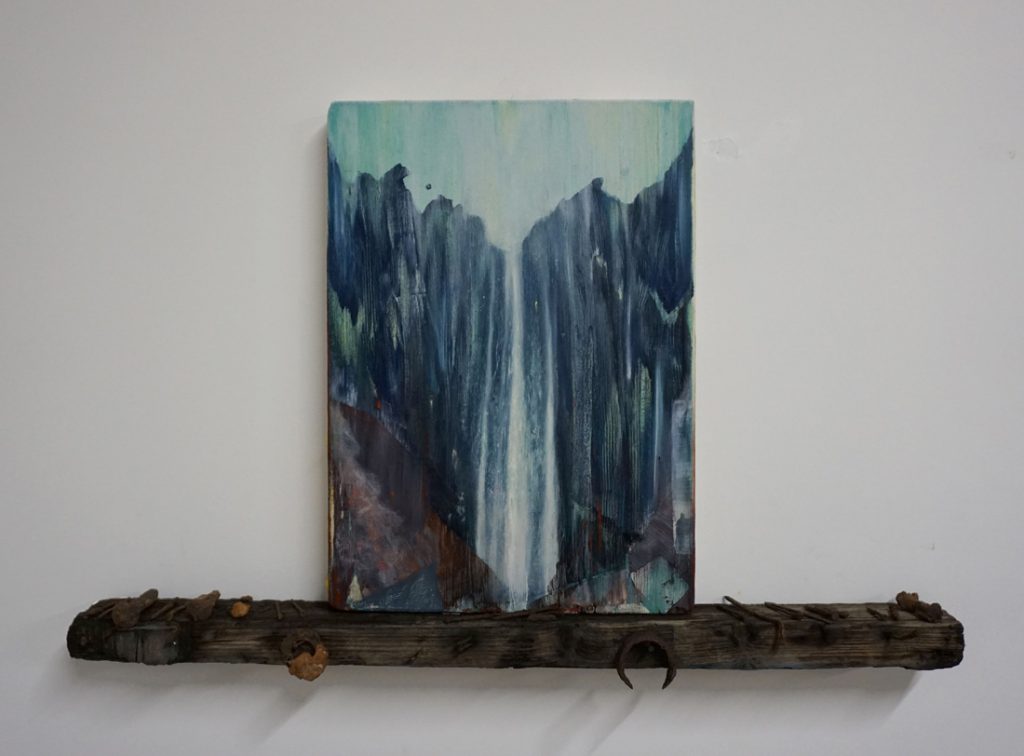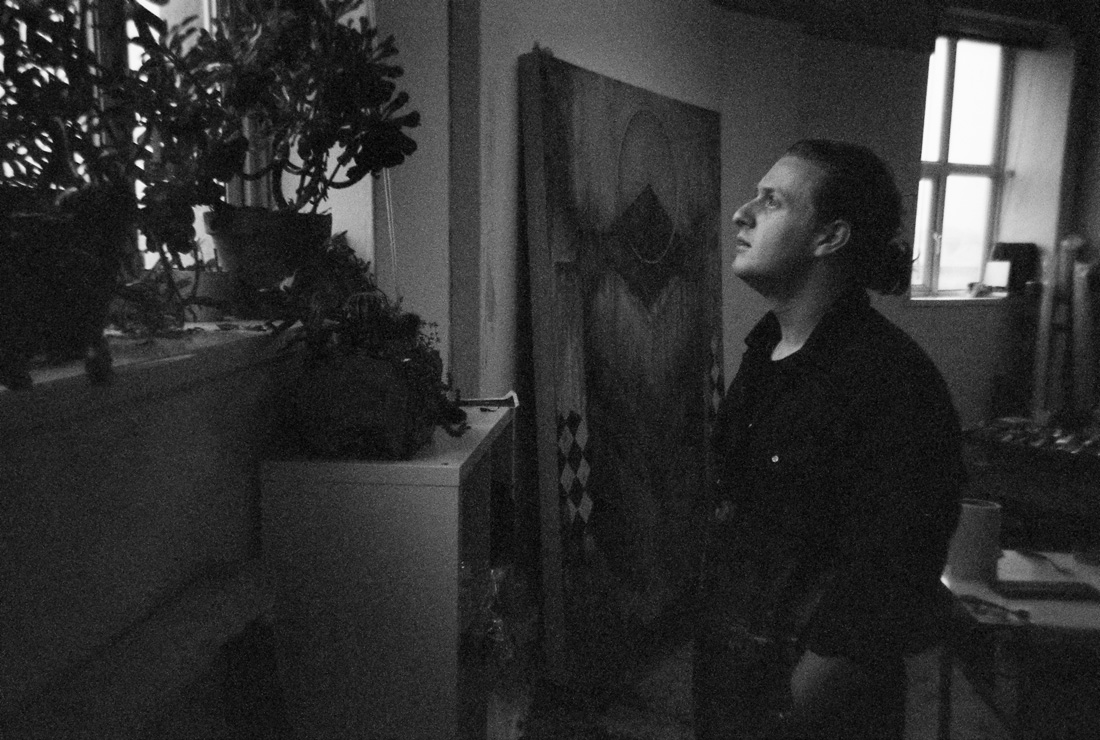What is your typical studio routine?
I tend to follow routine in terms of my working day/hours and general commitment to the studio, that said there are very few constants within a normal working day.
I tend to trust my instincts and make use of ‘fresh eyes’ upon entering the studio. I try to dedicate time to just read the paintings over. Paintings often seem to change through the night as pigments and mediums dry, the changing of daylight can either glamourise or totally plummet my judgement of previous efforts. Oil is such a versatile medium so I try not to over-plan. When the right impulse emerges I will jump right into painting. That contrast between reflection and impulse probably says a lot about my work process. If I’m not painting I’m probably building or mixing things. I like being able to do things by hand; building my own stretchers, mixing my own grounds and mediums. I use all sorts of strange potions in my paintings, keeping that sense of mystery in the surface is important to me. Making these things takes time. The studio is an elemental place, I prefer to keep the focus on painting and keep the admin at home.
For the most part of the year my weeks are split between Belfast and Donegal. I will often drive straight to the studio in Belfast on a Monday morning, and back to Donegal on a Thursday or Friday, work permitting. I actually find that split in routine beneficial in some ways. I have come to accept that separation and stopping points can be necessary to avoid staleness in the studio. That said I do believe that good paintings require an investment of time, regardless of how quickly or slowly they are made. My studio time stays the same regardless of whether I am working towards an exhibition or not, there is a level of intensity I try to maintain in my practice.
Was there a definitive point in your life that you decided to become a professional artist?
I don’t really remember there being any pivotal points or any crucial decisions, it all happened very seamlessly. I studied art in school with the intention of progressing to art college and then did a degree in Fine Art with the intention of becoming an artist. Both of my sisters studied in the art college some years before me, so I was fairly familiar with that environment and knew it was what I wanted to do.
I think the fact that myself and my siblings all became artists must stem back to our childhoods. Neither of our parents ever studied art but the natural environment they exposed us to, growing up definitely led to a more sensuous engagement with the natural world. I refer to that environment in my work, often considering it as a sort of ‘core’ or ‘zone’ where both memory and artistic impulse emanate from.
Socially, historically and perhaps geographically, Belfast has many ‘unique’ attributes that define it as a city. Can you describe one positive and one negative aspect of working in this ‘unique’ place.
I think there is a lot to be said about the working energy across artists in Belfast. There is ambitious work being made here, and artists don’t seem to be phased by making work of a large scale. The style of painting in Belfast seems to be diverse and often stays clear of certain trends. Perhaps these things come down to Belfast being a smaller city. An obvious positive aspect of working in Belfast is that it is affordable for artists to sustain a studio practice. I feel very fortunate to be able to afford such a good space to work in.
For Belfast artists, the city seems to be in a strange place right now. Despite being a city that promotes ‘culture’ the areas of Belfast that were once filled with studio groups and galleries have been diminished in recent years. With the vast redevelopments in the city centre, the number of outlets available for younger artists to showcase work of an ambitious and experimental nature seems to be dwindling at a pace. This is obviously off-putting for younger artists who want to base themselves here but I think it is important to show a resilience and start creating some opportunities for ourselves.
You can view Charlie Scott’s profile page here.

The full list of questions to choose from is given below:
1. What is your typical studio routine?
2. Was there a definitive point in your life that you decided to become a professional artist?
3. Many of us at QSS have previously studied at Ulster University at different stages of our education (BA, MFA, PhD). How did this experience influence your later attitude as a professional working artist?
4. Socially, historically and perhaps geographically, Belfast has many ‘unique’ attributes that define it as a city. Can you describe one positive and one negative aspect of working in this ‘unique’ place.
5. There are many arts journals, which would you consult regularly?
6. What role does social media play in the documentation/promotion of your own work?
7. Is there a difference, say, in being called an ‘artist’ or a ‘painter’/’sculptor’, ‘printmakers’? Do these distinctions matter?
8. How do you find an audience beyond the studio?
9. Have you completed any artist residencies or are there any you aspire to?
10. Can you name some of the contemporary artists you are interested in?

